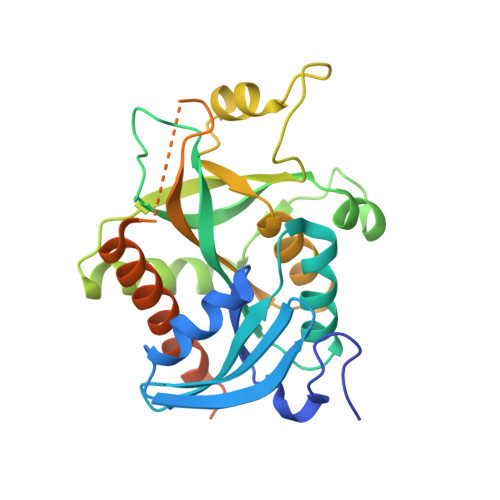Structural determinants of the 5'-methylthioinosine specificity of Plasmodium purine nucleoside phosphorylase.
Donaldson, T.M., Ting, L.M., Zhan, C., Shi, W., Zheng, R., Almo, S.C., Kim, K.(2014) PLoS One 9: e84384-e84384
- PubMed: 24416224
- DOI: https://doi.org/10.1371/journal.pone.0084384
- Primary Citation of Related Structures:
3FOW - PubMed Abstract:
Plasmodium parasites rely upon purine salvage for survival. Plasmodium purine nucleoside phosphorylase is part of the streamlined Plasmodium purine salvage pathway that leads to the phosphorylysis of both purines and 5'-methylthiopurines, byproducts of polyamine synthesis. We have explored structural features in Plasmodium falciparum purine nucleoside phosphorylase (PfPNP) that affect efficiency of catalysis as well as those that make it suitable for dual specificity. We used site directed mutagenesis to identify residues critical for PfPNP catalytic activity as well as critical residues within a hydrophobic pocket required for accommodation of the 5'-methylthio group. Kinetic analysis data shows that several mutants had disrupted binding of the 5'-methylthio group while retaining activity for inosine. A triple PfPNP mutant that mimics Toxoplasma gondii PNP had significant loss of 5'-methylthio activity with retention of inosine activity. Crystallographic investigation of the triple mutant PfPNP with Tyr160Phe, Val66Ile, andVal73Ile in complex with the transition state inhibitor immucillin H reveals fewer hydrogen bond interactions for the inhibitor in the hydrophobic pocket.
Organizational Affiliation:
Departments of Medicine, Pathology, and of Microbiology & Immunology, Albert Einstein College of Medicine, Bronx, New York, United States of America.
















